The best substrate for Ball Pythons is one that is safe and non-toxic. It should also be hygienic, reasonably mold-resistant, and comfortable for your snake to rest on. Asides from these criteria, the main thing to look for is humidity retention. A good substrate should hold humidity well to help with shedding.
In this article, we’ll look at the best substrate types currently available, based on my experience. We’ll cover newspaper, coco chips, aspen, cypress mulch, and bioactive substrates. I’ll also tell you which ones are potentially hazardous to your snake.
Top 5 substrates for Ball Pythons
There are more options available for substrates almost every year now, but not all of them are created equal! Let’s looks at the top 5 substrates that I’ve used personally, and that other breeders swear by. They are:
- Newspaper
- Coco chips
- Cypress mulch
- Aspen
- Paper towels
1. Newspaper
Newspaper, in my opinion at least, is the easiest, cheapest, most convenient, and most hygienic substrate available. You can easily replace it completely each time the snake makes a mess.
This hugely reduces the microbial load of the enclosure, especially if you have a quick wipe round with some diluted veterinary disinfectant at the same. It also means that cleaning on a regular basis doesn’t become too expensive. The only downside is that newspaper is pretty ugly to look at.
You can also buy newspaper offcuts in bulk on eBay, which don’t have any ink on them. This is worth considering, as personally I find it annoy when ink stains the enclosure – or worse – the snake!
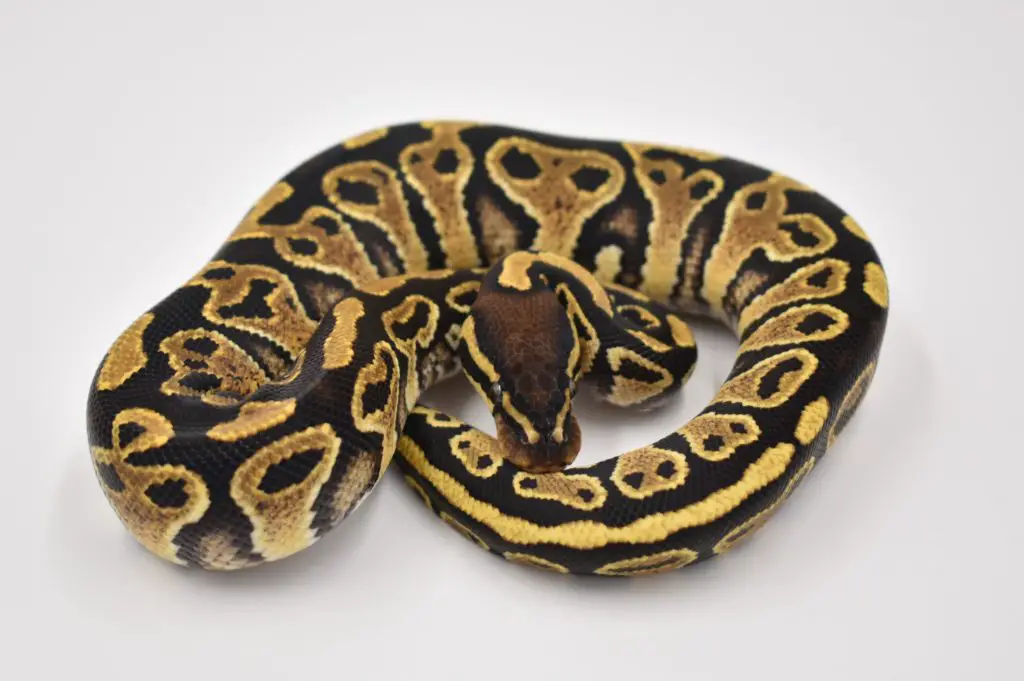
| Pros | Cons | Price | Availability |
| – cheap – hygienic | – ugly – ink may discoulour white snakes | very low | high |
2. Coco chips
Coco chips are squares of coconut husk that are great for maintaining humidity in an enclosure. They are naturally absorbant, and can hold a lot of moisture without feeling wet.
One of the main marketing points for this substrate is that it’s “mold resistant”. Now, not a lot of organic material is truly mold-resistant, and the same is true for coco husk. It has a slight mold resistance, which varies by brand. Before buying any, I suggest researching what brand other hobbyists are happy with.
Reptichip (below) is very popular and getting great reviews, but isn’t available everywhere. Shop around and see what the best brand is in your country/region.
| Pros | Cons | Price | Availability |
| – holds humidity – antimicrobial properties | – varies a lot by brand | average | poor-to-average |
3. Cypress mulch
Cypress mulch is another substrate that is great at holding humidity. It’s also attractive to look at and can go well in a naturalistic enclosure. It’s main downside is that it tends to be fairly expensive when compared with the other substrates on our list.
| Pros | Cons | Price | Availability |
| – holds humidity – looks goood | – may not be sustainably sourced | average to high | average |
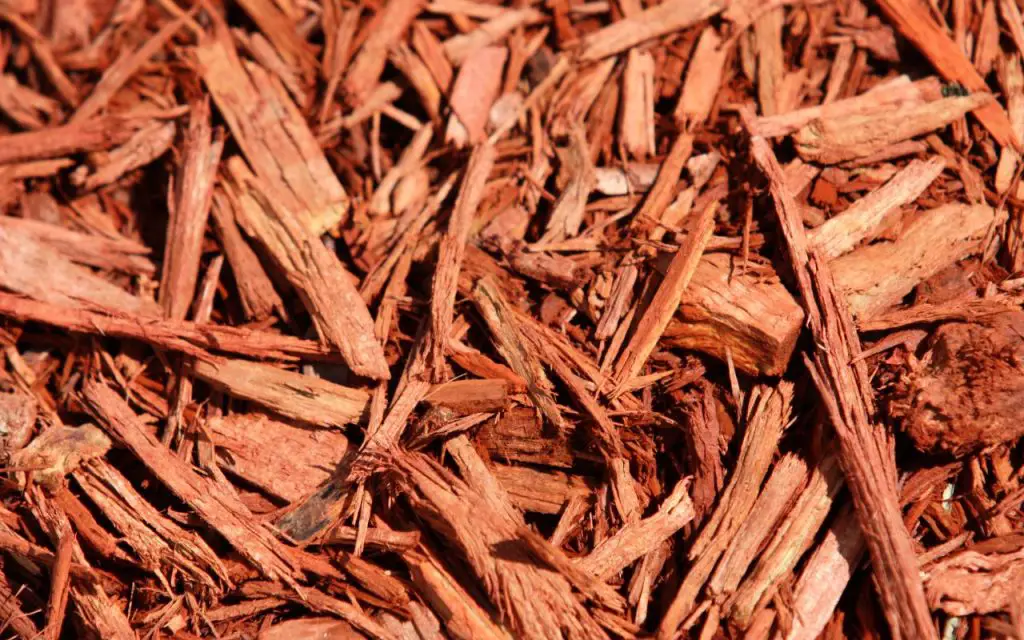
4. Aspen
Though not the most widely used, Aspen chips are great for Ball Pythons. It can in fact be one of the best beddings for them. The problem is that it isn’t great at holding humidity, so it needs to be in the form of chips rather than aspen shavings, and preferably used in tubs or racks rather than vivariums.
In fact, use aspen below ceramic heat emitters and you’ll quickly see it turn to extra-crispy, humidity-draining sawdust!
| Pros | Cons | Price | Availability |
| – looks good – easy to spot clean | – not great at holding humidity | low-to-average | high |
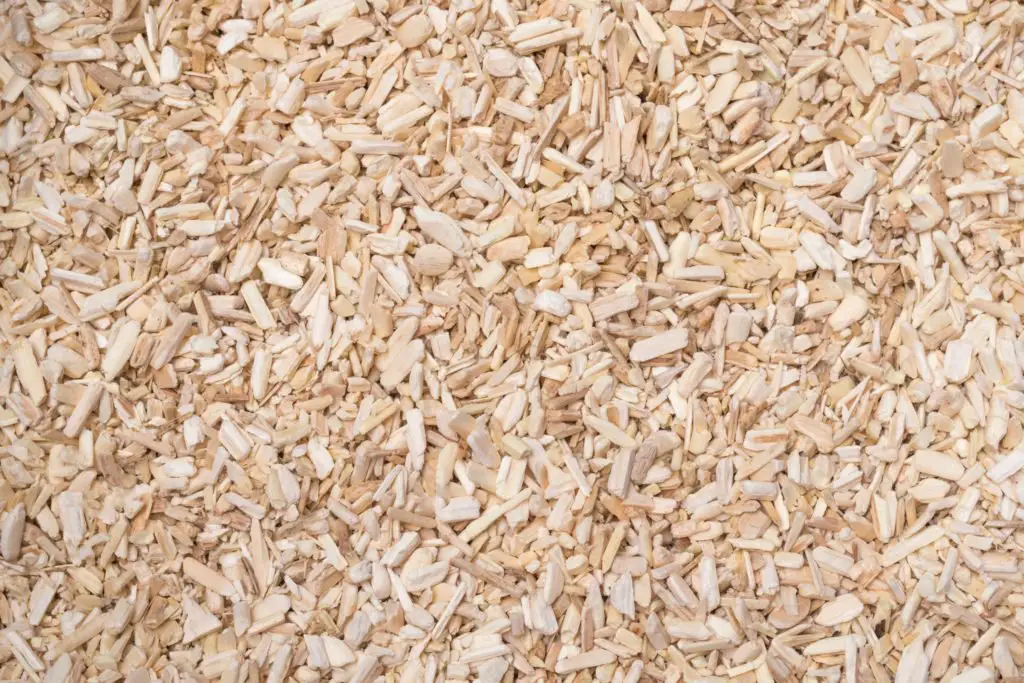
5. Paper towels
Personally, I always provide paper towels for baby ball pythons. Why… because you can moisten them to maintain high humidity, and because they work out even cheaper than newspaper!
Don’t get me wrong, I’m happy to pay for whatever is best for my animals. But baby Ball Pythons pee every other day and are more delicate than adults. You need a good substrate for babies, that is also economical.
They need high hygiene standards and very even relative humidity to prevent dehydration. A cheap, easily disposable substrate makes the most sense for them.
| Pros | Cons | Price | Availability |
| – holds humidity – hygienic | – ugly – too light for adult Ball Pythons | very low | high |
Best Ball Python substrate for humidity
First of all, you need to be aware that humidity can be greatly affected by two things: the enclosure you use, and the substrate. If you’ve read many of my articles on here, you’ll know that humidity is extremely important for proper hydration, shedding and defecation in Ball Pythons.
This is why it’s important to choose a substrate that won’t get too dry in your pet’s enclosure. Large open enclosures like wooden vivariums, larger glass tanks and PVC setups have increased air volume which leads to increased desiccation and lower humidity.
These enclosures need a substrate that holds humidity well! So far, I have found that Coco chips are the best bedding for consistently maintaining humidity.
Plastic tubs and rack systems, on the other hand, have lower air volume, and less ventilation. This helps them maintain higher humidity and means they rely less on substrate to do so. For these enclosures, you can maintain satisfactory humidity levels with literally any of the substrates I discuss in the next section.
Throughout this article, we’re going to look at my favourite substrate choices and discuss how well they retain humidity. We’ll also look at how safe they are, how hygienic they are, and whether you should consider a DIY substrate.
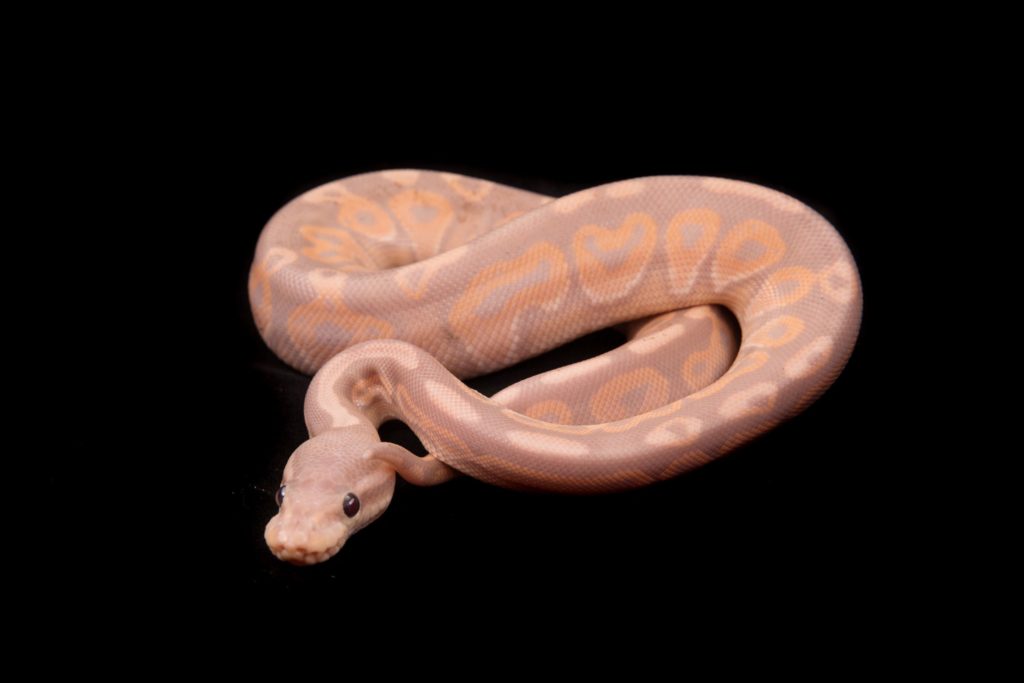
In the video below, you can see how to prepare Reptichip, one of several coco chip products available for reptiles.
What substrates are bad for Ball Pythons?
There are some substrates that are dangerous for snakes and must be avoided at all cost. Unfortunately, they are still widely available in pet stores and it is easy to make a mistake if you’re new to the hobby.
Cedar shavings, for example, are highly toxic to snakes. Pine shavings are an irritant and also probably toxic.
Sand is also widely sold for enclosures but can be very dangerous to Ball Pythons. This is because it sticks to their food and slowly blocks their digestive tract, a phenomenon known as impaction.
Strangely, it seems these snakes can ingest and pass bits of substrate that are reasonably large, like a small coco chips, but sand and fine particles clump together and build up. Obviously different species of snakes need different substrates, and sand may be appropriate for Sand Boas, for example.
Another truly terrible substrate choice is reptile carpet. This looks like miniature AstroTurf and is meant to be long-term bedding.
It is unhygienic, hard to clean, and also looks incredibly uncomfortable for a snake to sit on. In fact, if you walk into a pet store that uses reptile carpet, I recommend spinning around and walking straight back out.
When I was a kid they used to sell this stuff by the cubic feet, and it did look pretty attractive – you quickly realise it’s awful though!
In summary, NEVER use the following substrates:
- cedar
- pine
- scented paper towels, paper or other aromatic substrates
- substrate collected outdoors (unless sterilised by heat)
- sand
- reptile carpet
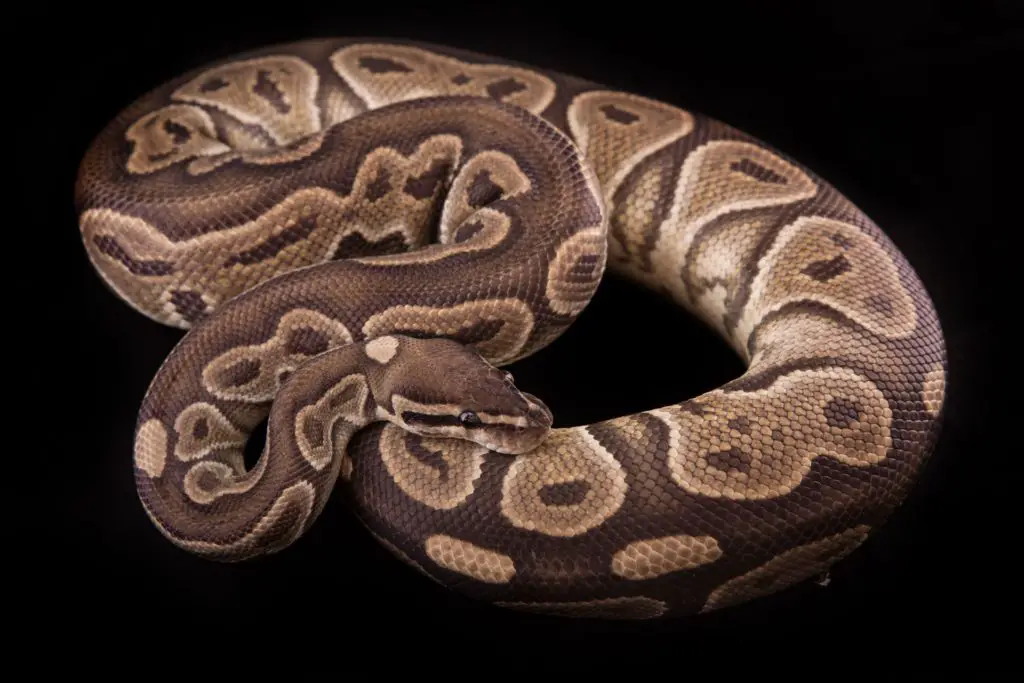
Is potting soil safe for Ball Pythons?
Potting soil is safe for Ball Pythons if it has been sterilised, usually through baking. This is the best way to make sure it doesn’t contain mites, parasitic worm ova, or other pests and fungi.
This kind of precaution is particularly important with potting soil that was sourced from an area that has native snakes. This might sound over the top, but it’s better to be safe than sorry!
After all, we have a responsibility to protect our pets from health issues, and this should play a role in how you prepare a natural substrate.
How deep should Ball Python substrate be?
If you’re using a substrate to maintain proper humidity levels it needs to be around 2in (5cm) deep to hold any real moisture. This depth is suitable for enclosures that use heat mats, such as racks and tubs.
For larger enclosures that use heat lamps, emitters, panels, or other overhead sources you can make the substrate deeper if you like. For bioactive enclosures I recommend making it at least 4in (10cm) deep with an additional drainage layer of rocks and charcoal (carbon) underneath.
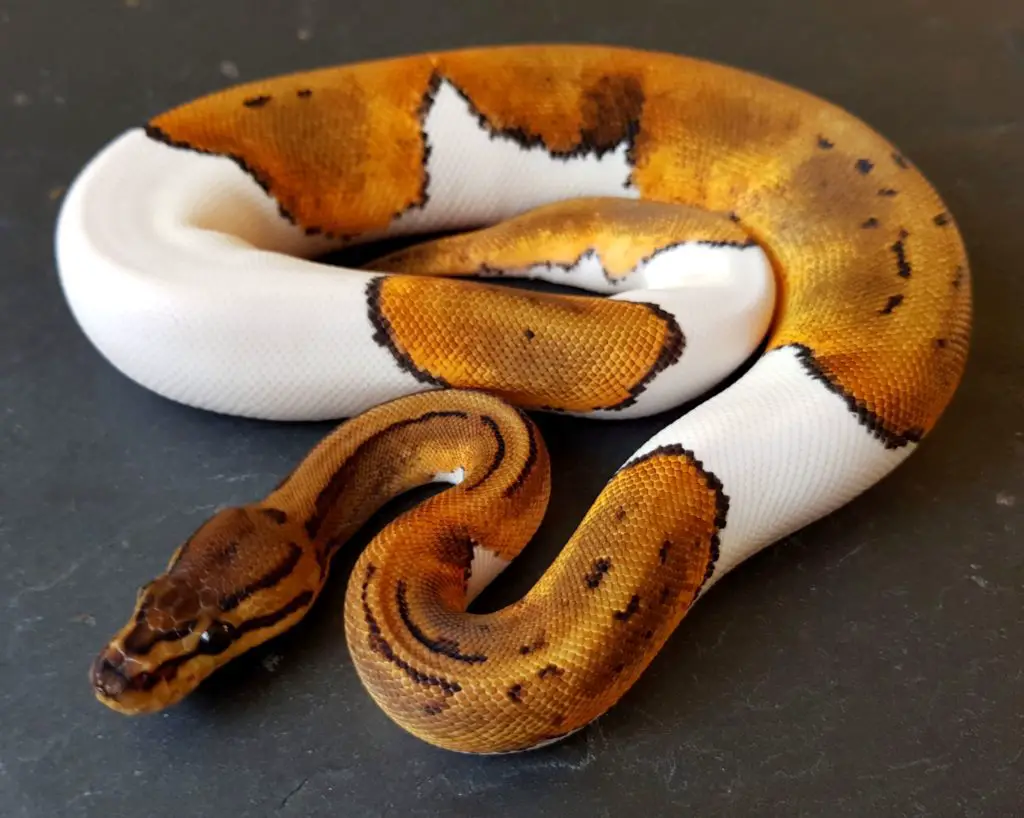
DIY Ball Python substrate
The easiest and cheapest DIY substrates are of course newspaper and paper towels. Their drawback, however, is that they are best suited to tubs and obviously not a good choice for a naturalistic enclosure.
They don’t look natural either, not in the slightest. If you’re making a bioactive enclosure, or a naturalistic one, you obviously want it to look natural. After all, that’s the point of going to so much effort!
Making your own DIY substrate is a good way to reduce the visual homogeneousness of a substrate. For example, you could mix 30% Cypress mulch, 30% Coco chips and 40% Orchid bark to give the enclosure a forest floor kind of vibe. To top it off, you could scatter sphagnum moss over the top and you would be approaching a very natural look indeed.
Coconut fibre substrate for Ball Pythons
There is a common myth that Ball Pythons live in rough soil like you’d find in your garden. With this myth goes the idea that you should buy them some Coconut fibre (Eco Earth) or another fine-particle substrate, so they feel at home! Really, this isn’t quite the case though…
From speaking to contacts who have caught Ball Pythons in the wild, the overwhelming evidence is that the majority of them hide in small mammal burrows most of the time. Some also use termite mounds or other hollows they can find.
If you’ve ever dug up and investigated small mammal burrows, you’ll have noticed that the floors of them tend to be well-trodden and smooth from all the scampering about that they do.
In fact, some of them are downright hard to the touch. They aren’t like a freshly dug flowerbed.
In my opinion, Ball Pythons probably don’t like getting soil-like substrates such as coco fibre stuck in their labial pits! I for one will not be using it on its own, and never have.
However, coco fibre does have its place as a component of DIY substrates and bioactive substrates.

Does coco fibre cause impaction?
Overall, it’s unlikely a Ball Python will get impacted from coco fibre. I say this mainly because they don’t eat very often, and they are big enough to pass the odd lump of substrate.
In fact, coco fibre has even been found to be safe for small reptiles like leopard geckos, for example.
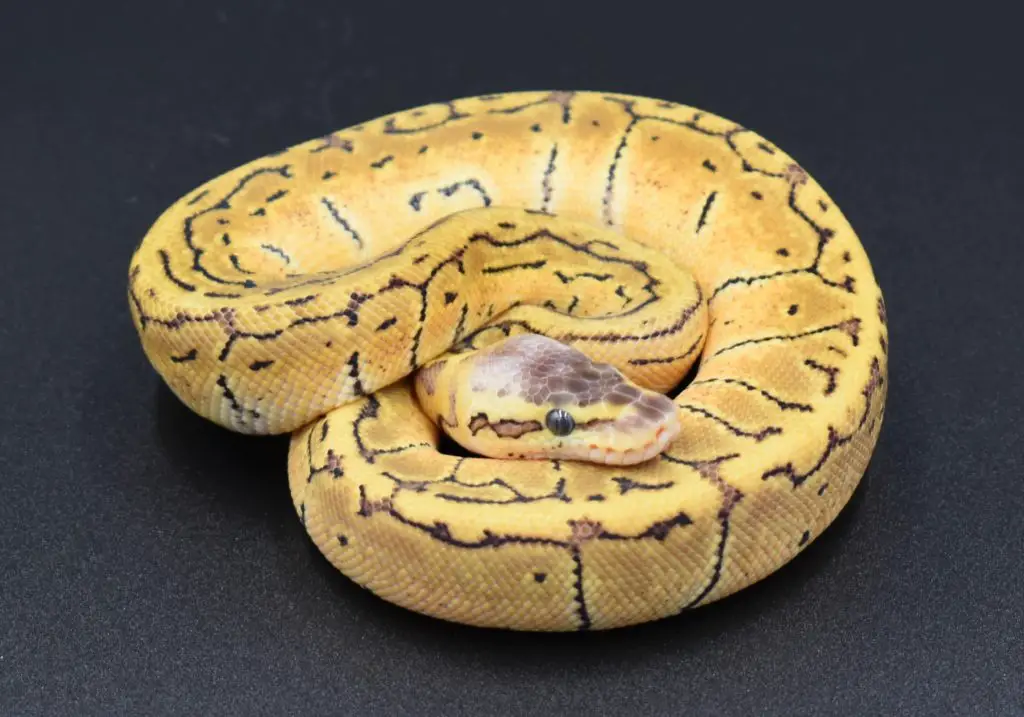
Best bioactive substrate for Ball Pythons
As I’ve said many times before, a bioactive vivarium is a tricky option for Ball Pythons. That said, you can make a bioactive enclosure work. Just use common sense when it comes to hygiene.
If someone tells you that you never have to clean them, you should be a little sceptical!
The best readymade bioactive substrate is probably Josh’s Frogs ABG Mix. This has been both a safe and popular choice for a few years now. Alternatively, you can make the substrate yourself.
A good bioactive substrate needs to have some sterilised soil content, some coco fibre, perhaps some orchid bark or coco chips and a little sand. The larger components will help stop it from getting too compact and limiting plant growth.
I would personally go with 40% soil, 30% coco fibre, 20% coco chips and 10% sand. Below this layer, you should also add some activated charcoal, and some lava rocks or something similar for drainage. On top of the substrate, I would also cover it with magnolia leaves, moss, pieces of cork and similar things.
You wouldn’t have to follow this exactly though; you could add compost instead of the coco chips for example. It’s best to research it thoroughly before trying and make sure it will suit the plants you intend to use.

What is the best bedding for Ball Pythons? (My opinion)
The most widely used substrates in the hobby today are:
- Coco Chips great, but not quite as mold-resistant as the marketing makes out
- Newspaper great and cheap
- Coco fibre (Eco Earth, for example) – as a component, not on its own
- Cypress mulch (such as Zoo Med forest floor bedding or similar)
- Lignocel is good but still not widely available, may catch on soon
- Aspen should be in chip form, like Zoo Med aspen snake bedding
- Paper towels for babies up to 3 or 4 months, depending on size
- Orchid bark is very good, but expensive
In my opinion, the two best substrates for Ball Pythons are Coco chips (also called Coco husk) and newspaper. As I mention earlier, coconot chips are great for maintaining humidity.
They also have a slight antimicrobial effect that helps reduce mold, which is imortant for your ball python’s health. When using this natural bedding, it is easy to maintain great hygiene with the occasional spot cleaning and a complete change every couple of months.
FAQ relating to Ball Python substrates
What type of substrate is best for ball pythons?
The best substrates for Ball Pythons are newspaper and coco chips. These both hold humidity well and are cheap and widely available. Other great substrates include aspen chips, cypress mulch and orchid bark. The main substrates to avoid are cedar and pine – both of which are toxic to snakes.
Is coconut fiber substrate good for ball pythons?
Coconut fiber substrate is not good for ball pythons. It does hold humidity extremely well, but it also sticks to everything. This means your snake will get it stuck in its thermorecptive labial pits (heat pits) and may also swallow it when feeding. If you like the humidity-holding qualities of coconut products, opt instead for coco chips.
What do you put in the bottom of a ball python cage?
You can choose from a variety of beddings to use in the bottom of your snake’s enclosure. These include newspaper, orchid bark, cypress mulch, aspen chips, coco chips and Lignocel (shredded paper). All of these are safe, but you may find that your pet has a preference for one or the other over time.
Is Eco Earth substrate good for ball pythons?
Eco Earth is a brand name coco fiber product. It is not good for ball pythons, mainly because it can lead to digestive issues if they swallow it. It can also get stuck int their labial pits which irritates them. That said, Eco Earth is an excellent product for smaller reptiles, amphibians and arachnids that need high humidity levels.
Also on this topic:
More on substrates and hides:
Back to the substrate and refugia page.
